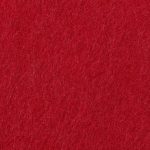When you're out in the elements, choosing the right material can make all the difference, and fleece stands out as a top contender for outdoor gear. Its ability to provide warmth without the bulk, while also allowing moisture to escape, sets it apart from other fabrics. Whether you're hiking, camping, or just enjoying a brisk day outside, fleece offers a blend of comfort and functionality that you might not find elsewhere. But what are the specific benefits that make fleece the go-to choice for many outdoor enthusiasts?
Table of Contents
Key Takeaways
- Fleece fabric offers exceptional warmth while remaining lightweight, making it perfect for layering during outdoor activities.
- Its breathability allows moisture escape, keeping you comfortable during intense hikes or adventures.
- Unlike down, fleece maintains insulation when wet, ensuring warmth in unpredictable weather conditions.
- Quick-drying properties prevent dampness from rain or sweat, enhancing overall comfort for outdoor enthusiasts.
Benefits of Fleece Fabric
Fleece fabric offers exceptional warmth and breathability, making it a popular choice for outdoor gear. When you venture into the great outdoors, you want clothing that keeps you comfortable, and fleece delivers just that. Its unique structure traps heat while allowing moisture to escape, so you stay warm without overheating.
One of the biggest benefits of fleece is its lightweight nature. You can easily layer it under a shell jacket or wear it alone during milder weather. Plus, it dries quickly, which is crucial when you're hiking or camping and encounter unexpected rain. If you sweat or get wet, fleece won't weigh you down.
Fleece is also incredibly soft and comfortable against your skin, reducing the chances of chafing during long adventures. It's durable, too, so you don't have to worry about it wearing out after a few uses. Easy to care for, you can toss it in the washing machine without a second thought.
Fleece Vs. Other Insulating Materials
When comparing fleece to other insulating materials, you'll find that its unique properties offer distinct advantages for outdoor enthusiasts. Unlike down, which can lose its insulating ability when wet, fleece maintains warmth even in damp conditions. This makes it a reliable choice for unpredictable weather.
Moreover, fleece is lightweight and compressible, making it easy to pack and carry on your adventures. In contrast, materials like wool can be bulkier and heavier, which mightn't suit your active lifestyle. Additionally, fleece dries quickly, so if you happen to get caught in the rain or sweat during a hike, it won't keep you damp for long.
Another aspect to consider is breathability. Fleece allows for better ventilation compared to synthetic insulators like polyester, which can trap heat and moisture. This can be particularly beneficial during high-energy activities.
Lastly, fleece is often more affordable than other insulating options, giving you great performance without breaking the bank. Overall, when it comes to versatility, comfort, and practicality, fleece stands out as an excellent choice for outdoor gear, making it a popular option among adventurers.
Popular Fleece Applications
Among outdoor enthusiasts, fleece is widely used in jackets, pants, and blankets for its warmth, comfort, and versatility in various conditions.
Its lightweight nature makes it an ideal choice for layering, whether you're hiking, camping, or just enjoying a chilly evening outside.
Here are three popular applications of fleece that you might consider for your next adventure:
- Fleece Jackets: These are perfect for cool mornings or evenings. They trap heat effectively while allowing moisture to escape, keeping you comfortable during physical activities.
- Fleece Pants: Ideal for lounging around the campfire or for added warmth during outdoor activities, fleece pants provide flexibility and comfort, making them a favorite among hikers and skiers alike.
- Fleece Blankets: These are great for picnics or keeping warm at outdoor events. Fleece blankets are lightweight, easy to pack, and provide excellent insulation against the cold ground.
Incorporating fleece into your outdoor gear can enhance your experience by keeping you warm without adding bulk.
You'll find that its adaptability makes it a go-to material for various outdoor activities.
Care and Maintenance Tips
To keep your fleece gear in top condition and maximize its lifespan, proper care and maintenance are key.
First, always check the care label before washing your fleece. Most fleece can be machine washed on a gentle cycle with cold water, but avoid using fabric softeners as they can clog the fibers and reduce breathability.
When drying, opt for a low heat setting or air dry it to prevent shrinkage. If you do use a dryer, toss in a few clean tennis balls to help restore the fleece's loft.
Regularly remove lint and pilling with a fabric shaver to keep your fleece looking new. After outdoor adventures, it's wise to shake off dirt or debris before storing your gear, and avoid cramming it into tight spaces, as this can lead to misshaping.
Also, consider storing your fleece in a cool, dry place, away from direct sunlight, to prevent fading and degradation.
Choosing the Right Fleece Gear
Choosing the right fleece gear can significantly enhance your outdoor experience by providing warmth, comfort, and versatility. With so many options available, it's essential to consider a few key factors before making your choice. Here are three vital items to keep in mind:
- Weight: Decide whether you need lightweight fleece for high-intensity activities or heavier fleece for colder conditions. Lightweight options are ideal for layering, while thicker fleece offers more insulation.
- Fabric Type: Look for fleece made from recycled materials for eco-friendliness, but ensure it's durable and moisture-wicking. Different fabric types, like microfleece or Polartec, offer varying levels of warmth and breathability.
- Fit: Choose a fit that suits your activity. A fitted fleece jacket is great for climbing or biking, while a looser fit might be better for lounging or casual hikes. Ensure it allows for movement without being too baggy.
Frequently Asked Questions
Is Fleece Eco-Friendly and Sustainable?
Fleece can be eco-friendly if made from recycled materials, reducing waste. However, some fleece types rely on petroleum-based fibers, which aren't sustainable. Always check labels to ensure you're choosing the most environmentally responsible option.
Can Fleece Be Recycled or Repurposed?
Yes, you can recycle or repurpose fleece! Many recycling centers accept fleece, turning it into new products. Alternatively, get creative by using old fleece for blankets, pet beds, or other DIY projects around your home.
What Is the Lifespan of Fleece Gear?
The lifespan of fleece gear generally ranges from five to ten years, depending on usage and care. If you maintain it well, you can enjoy its warmth and comfort for many outdoor adventures ahead.
Does Fleece Hold Odors After Prolonged Use?
Yes, fleece can hold odors after prolonged use. It traps moisture and sweat, which leads to bacteria growth. To reduce smells, wash it regularly and consider using odor-resistant treatments to keep it fresh longer.
Is Fleece Suitable for Wet Weather Conditions?
Fleece isn't the best for wet weather since it absorbs moisture and loses insulation properties. Instead, consider layering it with a waterproof shell to stay warm and dry during unexpected rain or damp conditions.
- How to Properly Clean Your Simms Gore-Tex Waders - July 2, 2025
- The Complete Guide to Repairing Gore-Tex Waders - July 2, 2025
- What Is Gore-Tex Surround Technology in Shoes? - July 2, 2025







